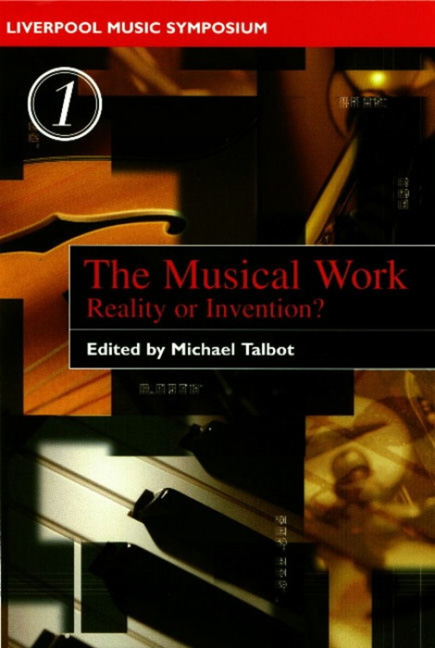Book contents
- Frontmatter
- Contents
- Notes on Contributors
- Introduction
- 1 Some Thoughts on the Work in Popular Music
- 2 Intertextuality and Hypertextuality in Recorded Popular Music
- 3 Work-in(g)-Practice: Configurations of the Popular Music Intertext
- 4 Work and Recordings: The Impact of Commercialisation and Digitalisation
- 5 The Practice of Early-Nineteenth-Century Pianism
- 6 Looking Back at Ourselves: The Problem with the Musical Work-Concept
- 7 ‘The Work’: An Evaluative Charge
- 8 The Work-Concept and Composer-Centredness
- 9 The Musical Artwork and its Materials in the Music and Aesthetics of Busoni
- 10 Re-composing Schubert
- 11 ‘On the Problems of Dating’ or ‘Looking Backward and Forward with Strohm’
- Index of Musical Compositions and Collections
- Index of Personal Names
2 - Intertextuality and Hypertextuality in Recorded Popular Music
- Frontmatter
- Contents
- Notes on Contributors
- Introduction
- 1 Some Thoughts on the Work in Popular Music
- 2 Intertextuality and Hypertextuality in Recorded Popular Music
- 3 Work-in(g)-Practice: Configurations of the Popular Music Intertext
- 4 Work and Recordings: The Impact of Commercialisation and Digitalisation
- 5 The Practice of Early-Nineteenth-Century Pianism
- 6 Looking Back at Ourselves: The Problem with the Musical Work-Concept
- 7 ‘The Work’: An Evaluative Charge
- 8 The Work-Concept and Composer-Centredness
- 9 The Musical Artwork and its Materials in the Music and Aesthetics of Busoni
- 10 Re-composing Schubert
- 11 ‘On the Problems of Dating’ or ‘Looking Backward and Forward with Strohm’
- Index of Musical Compositions and Collections
- Index of Personal Names
Summary
Presentation
In 1994 the late Lucien Poirier (to whom this essay is dedicated) held a postgraduate musicology seminar at Université Laval (Québec) entitled La Musique au second degré. The seminar's title referred to Gérard Genette's book Palimpsestes: la littérature au second degré. In this study Genette develops a theory of ‘hypertextuality’, which studies and characterises particular relationships that occur between different works of literature. The goal of Poirier's seminar was, therefore, to explore the possibility of applying this theory to music. The present essay is an attempt to apply the process, in part, to recorded popular music, which means that I will be considering the recording as the main object of my inquiry. By no means, however, is the process intended to be exhaustive; it aims simply to provide some new ways of looking at recorded popular songs, especially when one is considering the relationships occurring between a number of them.
Gérard Genette'sPalimpsests
Genette's ‘hypertextuality’ should be regarded as a subcategory of what a large number of theorists, following Kristeva's definition, have come to know as ‘intertextuality’. In his introduction Genette uses the term ‘transtextuality’ when referring to the ensemble of any type of relation, explicit or not, that may link a text with others – which is how most theorists seem to use and understand the term ‘intertextuality’. Actually, Genette considers intertextuality as a sub-category of transtextuality along with four others: paratextuality, metatextuality, architextuality and, of course, hypertextuality. ‘Inter-textuality’ is defined by Genette in a more restrictive sense, and is used to identify ‘a relationship of copresence between two texts or among several texts: that is to say, eidetically and typically as the actual presence of one text within another’ (quoting, allusion and plagiarism being its most important, if not only, manifestations). It is in reference to these definitions that I will be using the terms ‘intertextuality’ and ‘transtextuality’ in the pages that follow.
Again according to Genette's nomenclature, ‘paratextuality’ refers to the ensemble of relationships between a particular text and some of its accompanying features, such as the general title, chapter titles, foreword, illustrations and cover. Similarly, Genette defines ‘metatextuality’ as a commentarial relation which links one text with another, the most important examples being reviews and critiques.
- Type
- Chapter
- Information
- The Musical WorkReality or Invention?, pp. 35 - 58Publisher: Liverpool University PressPrint publication year: 2000

